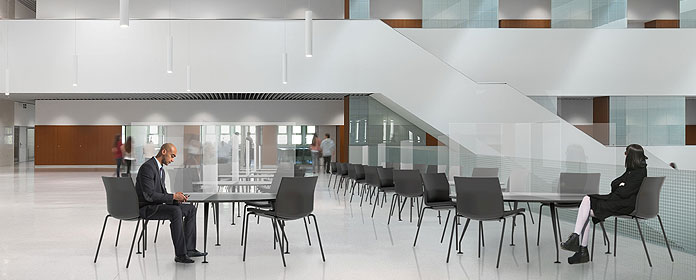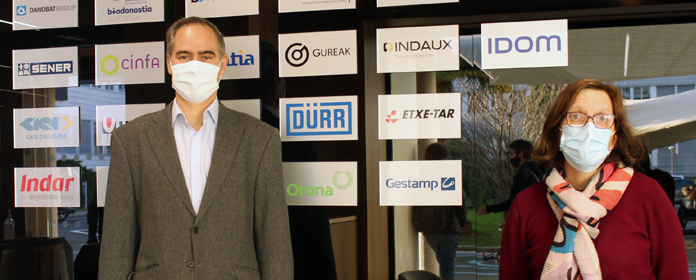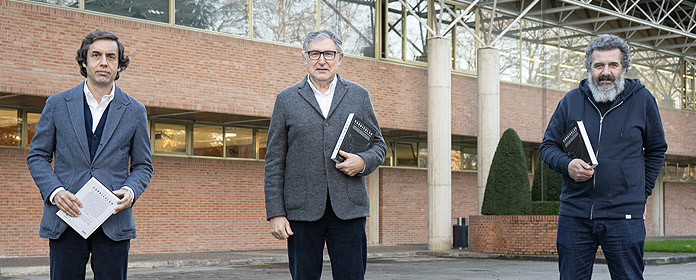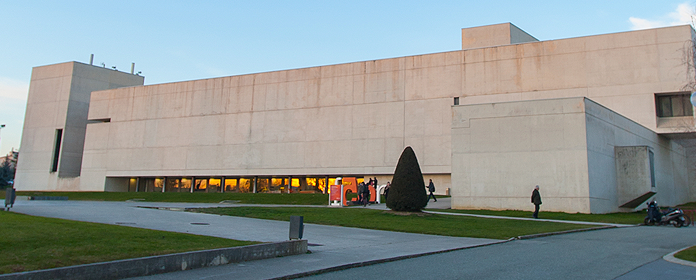The University doubles the space at work and reinforces technical equipment in classrooms to offer an on-site teaching in September.
A strategic plan has been launched that includes 40 measures on health and safety, teaching, and scholarships and grants.

More than 11,000 students from Degree and Master's Degree will begin the academic year at the University of Navarra and they will do so in a face-to-face and personalized way. The academic center has designed a strategic plan so that on September 1 there will be a renovation of the teaching, new work spaces in all buildings, health prevention measures and a update of technological equipment to support the teaching. All in favor of the commitment to face-to-face attendance. All these measures have involved an investment of more than one million euros.
"We have learned a lot from the successes and mistakes of these months of confinement and we want to take advantage of these lessons to promote a renewal of teaching methodologies, always looking at the best student learning," says the Vice President of Office of Academic Affairs, Pablo Sanchez-Ostiz.
To protect people's health, the university center has decided to reduce the capacity of its classrooms by half. In order not to lose capacity, it has doubled the current work spaces by creating new areas, distributed in three groups: study places staff and in silence, places for face-to-face work at group with a distance of one and a half meters between people, and places for work with remote connection.
In total, almost 2,000 spaces could be set up at work if necessary. "With these areas we want to ensure that the teaching is as face-to-face as possible, and very focused on the learning of student", says Guillermo García del Barrio, director of the Management Service of Campus.
It is also planned to increase the connectivity of campus with the installation of electrical outlets and network for recharging devices (laptops, tablets, cell phones, etc.).
The global strategic plan implemented by the University covers three main areas. Forty measures have been taken in these areas : 17 in health and safety, 12 in teaching and 11 in scholarships and student aid.
Personalized advice and new teaching methodologiesFace-to-face hours at classroom are also reduced by half. The measure has been adopted in order not to increase the load of work of professors and students, and to respect the dedication of the professor to research.
The subjects will have the same teaching hours, which will be taught with face-to-face classes, more participatory methodologies and work at development staff and group. Some of these methodologies, already used in campus, are case studies, cooperative learning, teaching simulations, service learning, etc. With this outline, the Schools and schools have redesigned the internship totality of the 1,800 subjects taught.
Students will have access to textbooks in electronic format, thanks to the partnership of the centers and the new resources of the Library Service and the publishing house Eunsa.
In addition, the University intends to reinforce the personalized teaching through the implementation of a personalized counseling program, called "Tu&Co", for the development of professional and personal competencies. The program has already been applied on an experimental basis in some Schools and will be extended to all centers in the future.
The training of teachers is an essential part of the new strategy. During the first three weeks of June, a total of 847 teachers and support professionals from the teaching are participating in a training course. "The goal is to share a series of didactic recommendations and show different technological tools so that teachers can custom design the teaching of their subjects for the next course," says Pepa Sánchez de Miguel, director of the Quality and Innovation Service, and promoter of the course.
Classroom technology and virtual officeStudents and professors at the University's Virtual classroom will have at their disposal videoconferencing systems such as Google Meet, Zoom, video recording systems such as Panopto and collaborative tools such as Google Suite, Socrative, Turnitin, etc. Classrooms and offices have been technically reinforced with webcams and graphic screens so that classes can be taught remotely.
Students will also receive recommendations on the most suitable technical equipment to start classes from the next academic year. "This crisis is an opportunity to emerge stronger: we have planned scenarios that allow us, through digitization, an improvement of all learning processes," said Ignacio Coupeau, director of IT Services at the University.
The university center will also implement a virtual office for the coordination and management of all administrative procedures. The project, available with the new course, will reduce the consultations and formalities that teachers, administrative and students perform in their most common centers and services. The tool allows channeling requests through WhatsApp, mail, calls and a self-help portal on a single screen.




